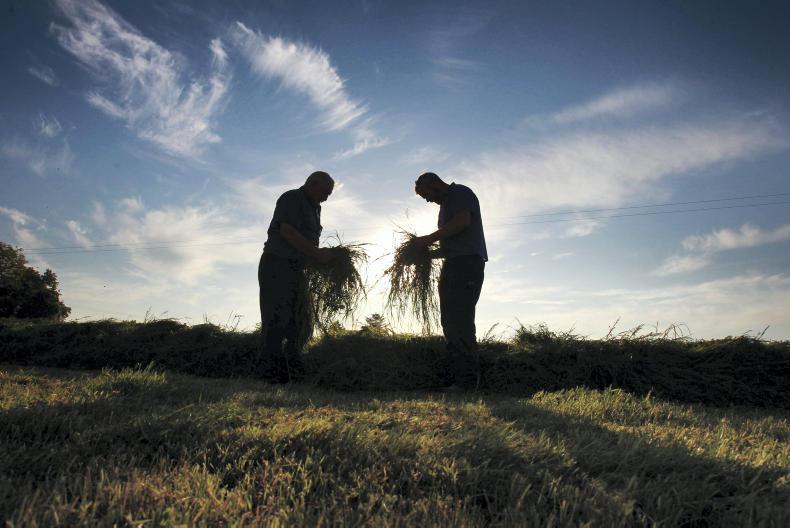Getting enough nutrients into cattle is one of the main challenges facing farmers and, in most cases, energy is the nutrient we have trouble with.
Beef and dairy farmers alter their animals’ energy intake as required based on stage of production and body condition.
But what the trough is filled with and what the animal takes in do not always match.
Just like humans, cattle can be picky eaters. If we give them reasons not to eat what’s in front of them, chances are they will oblige to some extent.
At grass, apart from keeping swards leafy and being careful with slurry applications, there is little more we can do to keep intakes up. However, when cattle come into the yard, it’s a whole different ballgame.
Though the vast majority of cattle in the country are looking at piles of it as we speak, grass silage can be a frustrating feed. Badly made silage can be a disaster for intakes and, as a nation, we are bad silage makers.
Tip of the iceberg
The typical Irish silage crop has a DMD in the low 60s, but DMD can be the tip of the iceberg in some cases.
Good digestibility (>70% DMD) will promote silage intake, but is no guarantee that optimal levels will be reached.
Research shows that high-NDF (fibre) concentration in silage (>50%) can negatively affect intake in cattle.
Dry matter should also be on our intake checklist. A value of less than 18% could spell trouble for intake for two reasons: firstly, the animal will be filling up with water while eating such wet feed; and, secondly, the wetter the silage, the bigger the chance that it preserved poorly.
Poor preservation will lead to bad tastes and smells – not good when we’re trying to keep intake high.
Preservation clues lie with silage pH – if it’s greater than 4.0 in a wet silage, accompanied by an ammonia level of >15%, you can be sure that intakes are sub-optimal.
Confined cases
Ash concentration should also be looked at – if it’s more than 8.5%, it’s a hint that the material is contaminated with soil or faeces. However, these are often confined cases, where balers or harvesters picked up more than just grass.
As if it wasn’t bad enough, poorly preserved silage will have a lower shelf life at feed-out.
On exposure to air, a waft of unwanted chemical reactions begin, as will the ticking time-bomb toward heating – another intake turn-off.
Such forages need to have minimal exposure to air prior to feeding.






 This is a subscriber-only article
This is a subscriber-only article






SHARING OPTIONS: